Email marketing ideas for ecommerce can turn the tide of your business, sparking engagement and driving sales. Let’s cut to the chase—this is about getting more eyes on your emails and clicks that convert.
By reading on, you’ll unlock secrets for nailing subject lines that grab attention, personalizing content so it hits home every time, and leveraging automation to keep things rolling smoothly.

Get ready to dive into tactics proven to lift open rates sky-high and discover how clear calls-to-action can make a real difference in your click-throughs. And remember, this isn’t just about sending emails; it’s crafting messages that resonate with existing customers, too—because their loyalty matters big time.
Stick around if boosting brand awareness sounds good, or snagging some traffic-generation tips could help. From mobile device tricks to social media integration, we have solid strategies for you.
What are Email Marketing Campaigns?
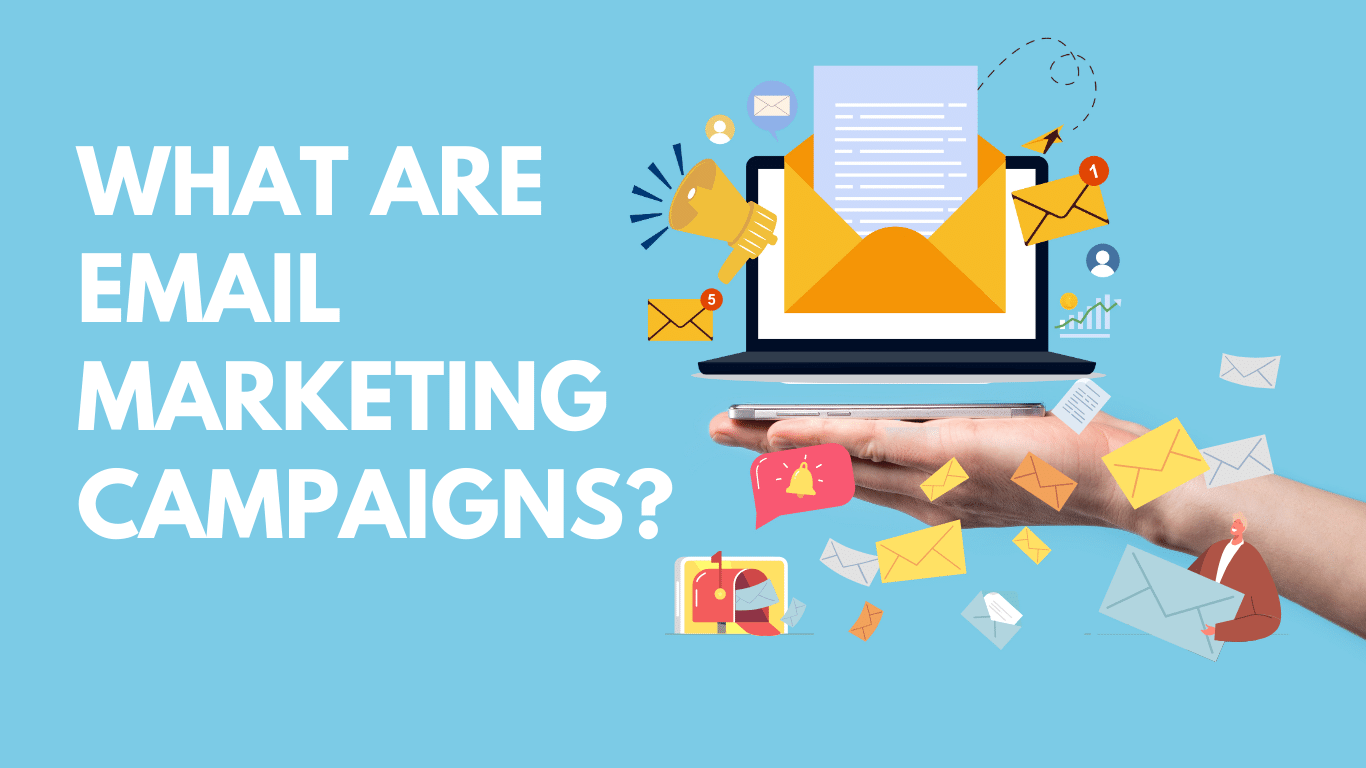
Email marketing campaigns are strategic efforts to communicate with a targeted audience via email to promote products and services or share valuable information. These campaigns involve sending emails to individuals who have opted to receive messages from a specific business or organization.
Critical components of email marketing campaigns include:
-
Audience segmentation, where the email list is divided based on factors like demographics or preferences.
-
Content creation involves crafting engaging emails with promotions, updates, newsletters, or educational content.
-
Automation tools to schedule and streamline the campaign process.
-
Personalization by tailoring content to individual recipients.
-
Analytics to track the performance of campaigns through metrics like open and click-through rates.
An effective email marketing strategy can help build and maintain customer relationships, drive sales, and enhance brand awareness.
21 Breakthrough Email Marketing Ideas Your E-commerce Email Marketing Need

It’s great that you’re interested in developing an email marketing strategy for your ecommerce store. Email marketing is among the most influential business tools, including e-commerce stores. It can yield a return on investment of up to $40 for every $1 spent.
Of course, the question is, what types of campaigns should you create? Fortunately, we’ve compiled a list of 21 email marketing campaigns essential for any ecommerce store, complete with helpful tips and real-world examples.
Triggered Emails
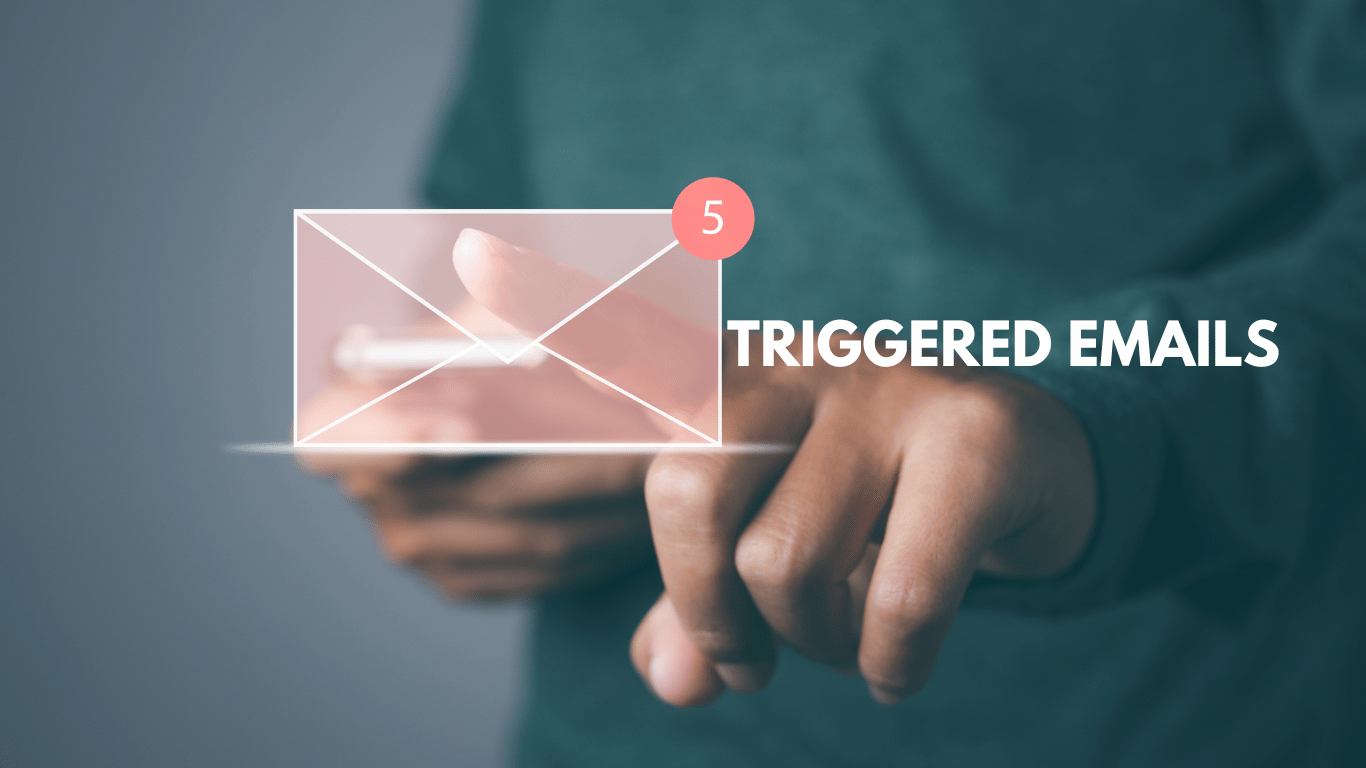
Triggered emails are automated campaigns triggered when a subscriber takes a specific action. This action can be browsing your website, abandoning their cart, buying a product, or something else.
1. Welcome Emails

A welcome email with a discount is a great way to engage with your subscribers. Typically, welcome emails have an average open rate of 50% and an average click-through rate of 25%, making them 86% more engaging than other emails you send to your list.
When you send a welcome email, you can introduce your ecommerce brand and the products you offer. You can also provide a compelling time-sensitive discount in this email.
Since engagement is so high in welcome emails, it’s the perfect chance to turn new subscribers into customers. So, don’t hesitate to offer your best discount in this email.
Imagine an example from Mario, an ecommerce brand that sells climb mountaineering tools. The email is simple and doesn’t need to be complicated.
You must thank them for signing up, introduce your brand and products (i.e., your elevator pitch), and offer a time-sensitive discount. You can also send a follow-up email before the welcome offer ends to capture even more sales.
2. Abandoned Cart Sequence
The abandonment of online shopping carts s an issue that plagues the e-commerce world, with an average of 70% of people leaving their carts before purchasing.
However, there is good news: abandoned cart email sequences have proven remarkably effective at recapturing lost revenue. An impressive 45% of abandoned cart emails are opened, 21% receive clicks, and 50% of those who click finish their purchase.
It is, therefore, critical to have a triggered sequence in place, with the abandoned cart email service provider as a reminder to the customer who has left their cart. YETI, an e-commerce brand that sells outdoor gear, sends the first email immediately after abandonment, a simple reminder of the products left in the cart.
If the customer fails to make a purchase the day after, they are sent a second email, which creates a sense of urgency by stating that the items in the cart are in high demand. Three days later, YETI sends another email, again working to create a sense of urgency.
Although the emails are relatively simple, the lesson is that the most critical aspect is setting up abandoned cart emails, as they serve as a reminder that can make a significant difference.
3. Browse Abandonment Email
We just discussed the importance of sending cart abandonment emails to people who leave their online cart without completing their purchase. However, another type of abandonment should be considered: browse abandonment.
Browse abandonment occurs when a person visits a product page on your ecommerce store but leaves without adding the product to their cart or completing a purchase. Although it happens earlier in the sales funnel, it still signals potential interest.
Interestingly, 43.8% of sessions end with a product page view, while only 14.5% end with an item added to the cart, which shows a significant gap. SaleCycle reports that browse abandonment emails have an 80% higher open rate and a 50% higher click-through rate than traditional emails, making them an effective strategy to engage potential customers.
4. Post-Purchase Education Emails
When customers receive your product for the first time, they may not know much about it. This is why the best ecommerce brands send educational emails to new customers about their products. These emails may teach customers how to get the most out of their new item or provide information about its benefits.
For example, you can create a triggered email or email series that educates your new customers about the product they just received.
Include information on what makes the product unique, how to use it to its fullest potential, care-taking tips, safety information, and anything else they should know. Send this email or a series of emails the day after the product is delivered!
5. Recommended Products Email
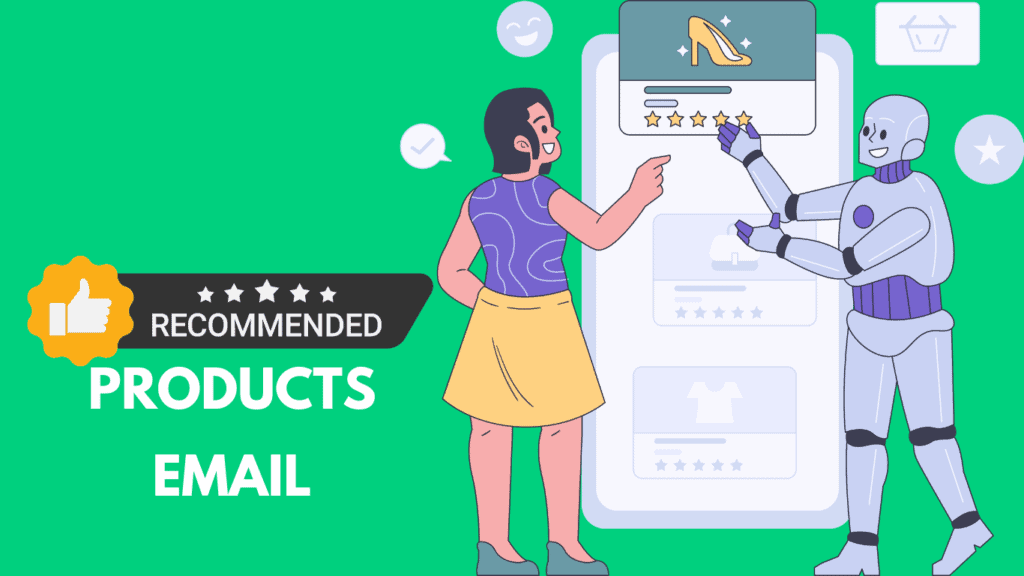
Triggered emails are personalized emails that recommend products based on previous purchases. Personalization significantly impacts the effectiveness of email marketing, with targeted personalization increasing customer engagement by 74%. Segmented and targeted emails generate 58% of all revenue.
Personalization is critical to meeting email marketing objectives, with 94% of customer insights and marketing professionals across various industries considering it necessary.
Sephora showcases how personalized recommendations can be made to feel like personal recommendations using an algorithm. To increase the likelihood of purchase and create an authentic experience, make the product recommendations as relevant as possible.
You can send product recommendations after someone abandons browsing, abandons their cart, receives their purchase, or during holidays and special promotions.
6. Back-in-Stock Email
If you run out of stock of a highly sought-after product, don’t let it discourage you. This presents an excellent opportunity to attract new subscribers and build a waitlist for when the product is back in stock. By doing so, you can keep your customers engaged and interested in your brand while creating a sense of anticipation for the product’s return.
7. Replenishment Email
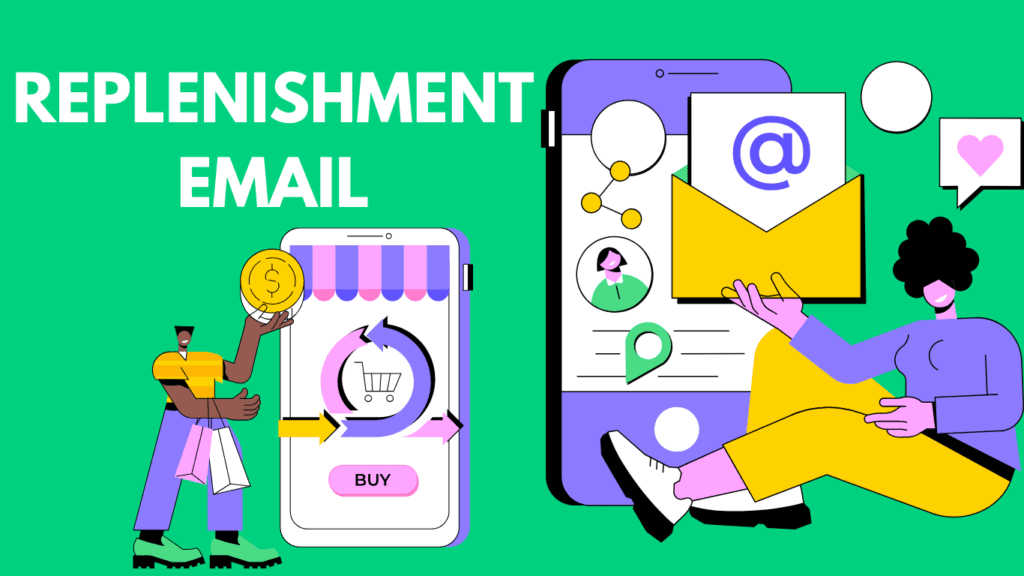
You can remind customers to restock products that require regular replenishment by using automated and personalized reminders based on individual usage patterns. Create automated sequences for each product and send replenishment emails on a schedule the customer can adjust.
This approach will improve customer satisfaction and retention rates, as seen in Sephora’s successful implementation. Take advantage of this opportunity to enhance customer engagement and loyalty for your brand.
8. Date-Based Emails

Date-based emails are triggered campaigns that include two types of emails: birthday emails and anniversary emails. These emails are triggered based on the subscriber’s specific birthday or anniversary, which refers to the anniversary of when they first became a subscriber.
These campaigns are highly personalized and can drive revenue and encourage conversions. By sending special offers or discounts on each subscriber’s birthday or anniversary, you can add a personal touch to your ecommerce email marketing strategy and increase engagement.
One-Off Emails (Broadcasts)

One-off email campaigns are manually sent to your audience at a single time. They are not triggered automatically by a specific subscriber behavior. Examples include newsletters, holiday emails, and periodic promotions.
9. Promotional Emails
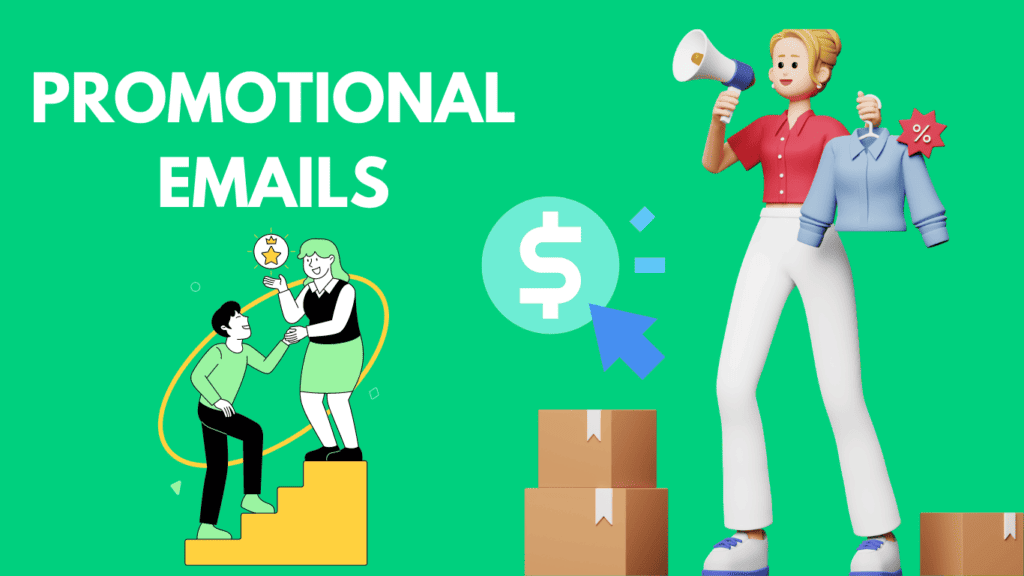
Promotional emails are a crucial component of email marketing for ecommerce businesses. These are the types of emails that you send out to commemorate holidays, offer discounts, and promote deals. You can use similar emails to promote seasonal offers or run periodic promotions to boost sales.
10. New Product Launch Email

Are you planning to launch and promote a new product? If so, this email will help inform people about your new product and drive them to the sales page. You can send a campaign designed to promote the new product and create awareness among the targeted audience.
11. Testimonial/Case Study Email

As a business owner, earning your customers’ trust is crucial for your company’s success. Regularly sharing testimonials or case studies with your subscribers is essential to maintain and strengthen this trust.
This helps highlight your accomplishments and demonstrates the positive impact of your products or services on your customers. You can build credibility and establish a positive reputation for your business by showcasing these achievements.
12. Re-Engagement Email Campaign
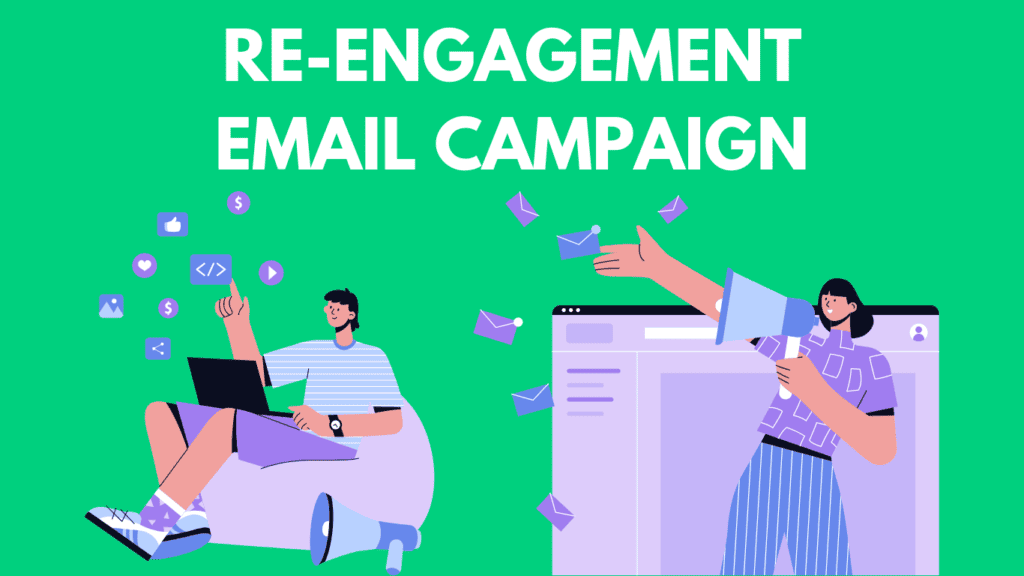
If some of your email subscribers are disengaged, you can use a re-engagement email sequence to recapture their attention. After receiving a re-engagement email, 45% will engage with future emails.
You can offer a small discount or ask if they receive your emails at the right place. Send a few re-engagement campaigns every six months to people who have not made a purchase, opened, or clicked on an email in the last six (6) months.
Offer a compelling discount, create curiosity with your subject line, and keep your email message short.
13. Newsletter E-Mails
The key is to send valuable information that enhances your brand authority.
14. Loyal Customer Emails
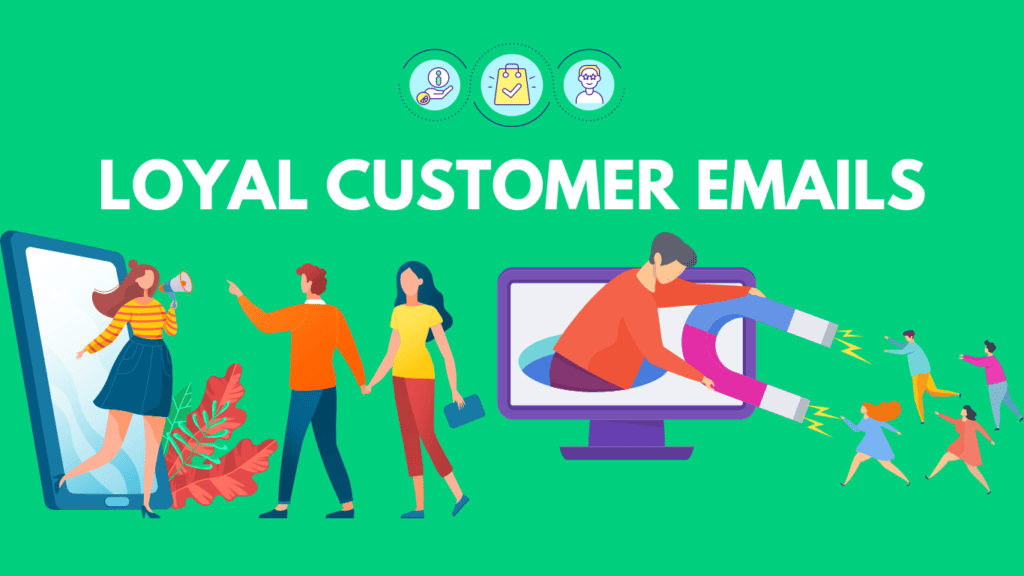
Did you know retaining existing customers is more profitable and accessible than acquiring new ones? Repeat customers spend 67% more on average in months 31-36 of their relationship with a business than in months 0-6.
A mere five percent increase in customer retention can significantly increase profits, ranging from 25 to 95 percent. Repeat customers are more likely to spend 33% more than new customers.
Therefore, offering exclusive deals to your most loyal customers is a smart move to capitalize on their loyalty. Pull a list of your most loyal customers to boost your revenue based on their past purchases and interactions with your business.
15. Content Roundup Emails
Good marketing in today’s digital age means building authentic connections with subscribers by providing valuable content. Content roundup emails are an excellent way to do this. They offer free value, a break from sales-heavy emails, and build trust with subscribers. Just find relevant content your readers will appreciate, organize, and send it to them.
16. Cross-Sell Emails
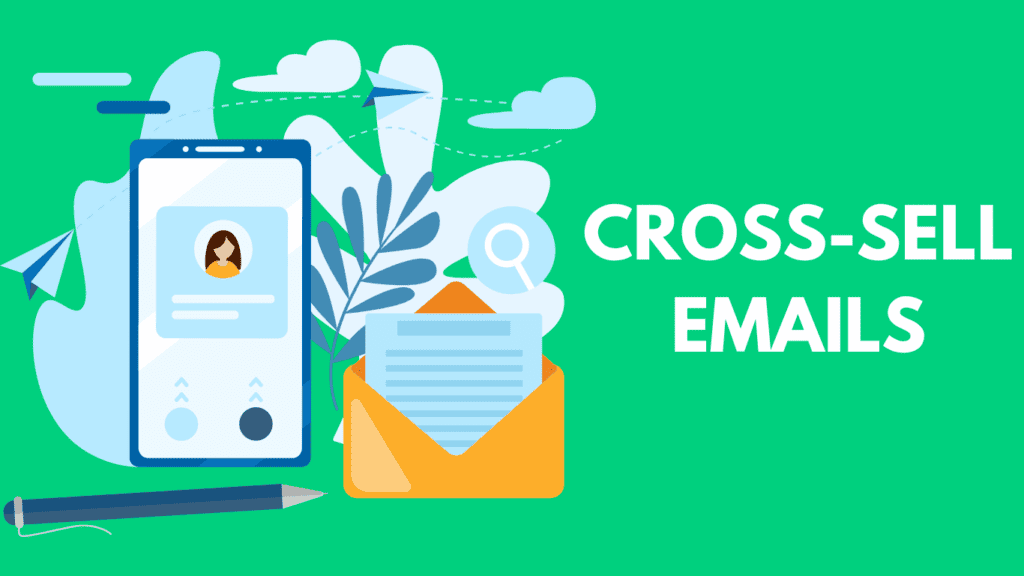
Increase your sales by sending personalized product recommendations to customers who have bought from you. User-generated content (UGC) is like gold dust sprinkled across campaigns, creating instant relatability—it shows real stories from customers who’ve walked down similar paths as prospects considering making purchases themselves.
Analyze your customer data, create segments, and produce tailored recommendations to provide customers with a more customized experience and boost sales. It’s a win-win situation!
Transactional Emails
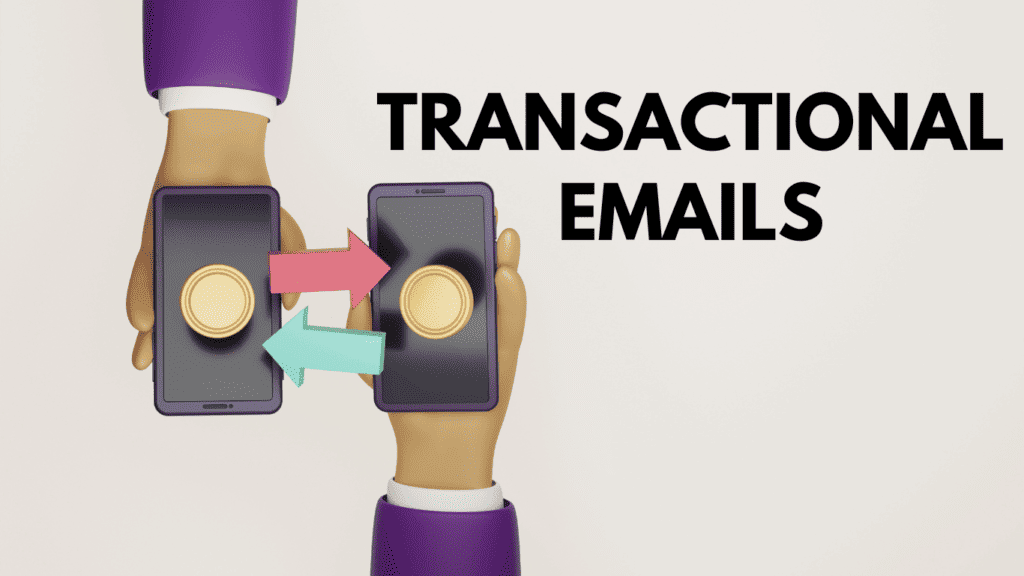
Transactional emails are sent to customers after they purchase your ecommerce store. They provide a receipt for the purchase and shipping tracking information.
17. Thank You Email (With Upsell)
Thank you emails are a crucial part of email marketing. HubSpot has named them the “Untapped Gold Mine of Email Marketing.” According to them, thank-you emails are twice as engaging as other campaigns.
This gives them an excellent opportunity to engage with your audience and sell them more products. For instance, YETI sends a simple receipt email upon purchase.
However, they follow up with an email the next day recommending other relevant products based on the original purchase. It’s far easier to sell to existing customers than new customers.
Therefore, once someone buys from you, send them a thank-you email and follow up with relevant product recommendations a few days later.
18. Shipping Emails
Do you update your customers on the shipping and delivery of their orders? Do you offer a simple tracking system? It’s unnecessary, but it can improve the customer experience and show that you prioritize their satisfaction and timely delivery.
19. Account Creation Email
An essential type of email that you’ll need to send is an account creation email. This email is automatically triggered when a customer purchases a product from your website.
The purpose of this email is to encourage the customer to create an account that would make their future purchases easier. Additionally, you can offer them a special discount to incentivize them to create an account. This is an important step to retain customers and improve their shopping experience.
20. Referral Email
Referral emails can help ecommerce businesses find new customers. Referred customers are more likely to make a purchase, have a higher lifetime value, and are more likely to engage with brands that offer rewards programs.
They also have a lower churn rate. Sending referral emails one week after the first purchase and offering rewards can motivate customers to refer their friends and increase profits by at least 16%.
21. Review Emails
When people buy products online – particularly from a brand for the first time – they check out online reviews.
Some statistics show that nearly 89% of consumers worldwide read reviews before purchasing products. Besides, about 62% of consumers won’t buy from brands that censor online reviews.
Also, around 54.7% of consumers read at least four reviews before purchasing a product. In other words, obtaining positive product reviews is crucial for growing your ecommerce business. To achieve that, the easiest way is to create a triggered email that requests new customers to provide reviews.
What Makes Email Campaigns Effective?
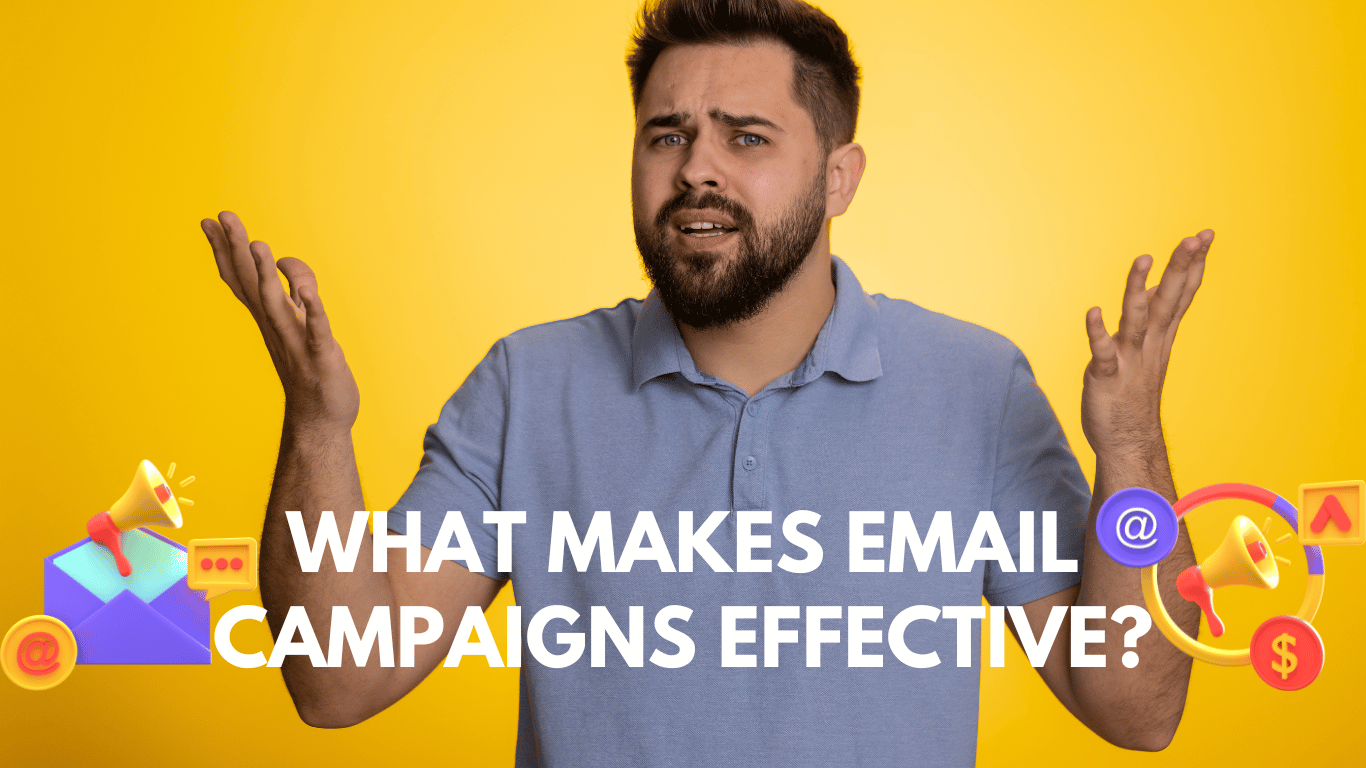
Several important factors can significantly influence the success of ecommerce email marketing campaigns. These include:
Customer segmentation
Customizing email content according to specific customer segments ensures the marketing messages are relevant and personalized, leading to better engagement.
Personalization
Adding personal touches to the emails, such as addressing recipients by name and providing personalized recommendations, can increase engagement.
Automation
Implementing automated email campaigns triggered by specific customer actions can streamline communication and ensure timely and relevant content delivery.
Compelling content
Creating valuable, engaging content that resonates with recipients is crucial. It can include promotions, informative newsletters, or exclusive offers.
Targeted marketing
Developing a targeted marketing strategy that aligns with customer preferences and behaviors can increase the effectiveness of promotional email marketing efforts.
Analytics and optimization
Regularly analyzing key metrics such as open rates, click-through rates, and conversion rates can provide valuable insights that can be used to optimize future campaigns for better performance.
Responsive design
Ensuring that emails are mobile-friendly with responsive designs can accommodate the growing number of users accessing emails on mobile devices.
Clear call-to-action (CTA)
Including clear and compelling CTAs that guide recipients on desired actions, such as making a purchase, subscribing, or participating in a promotion, can help to increase engagement.
Consistency
Maintaining a consistent communication schedule can help keep your brand top-of-mind without overwhelming recipients.
Testing and iteration
Conducting A/B testing to experiment with different elements of email campaigns and using insights to refine and improve future strategies can help increase email campaign effectiveness.
By integrating these elements, email campaigns can effectively capture recipients’ attention, drive engagement, and contribute to the overall success of marketing efforts.
The Pros and Cons of Email Marketing in E-Commerce
The Pros of Email Marketing in E-Commerce
- Offers a High Return on Investment
Marketing teams are always looking for ways to maximize the impact of their campaigns. Any channel that promises a significant return on investment (ROI) is considered a plus. Email marketing is one such channel that offers a high ROI, making it a cost-effective way to convert new customers into paying ones. What’s more, email marketing allows for testing different strategies to determine the most effective approach.
- Data and Analytics are Easy to Capture and Track
Data is becoming increasingly valuable in business as it helps understand customers. Email can capture and track information on who opens, reads, and takes action from each email.
- A/B Testing
Email marketing is a popular way of promoting businesses online due to its flexibility and quick setup. You can use this method to test various marketing strategies and content with your customers. By segmenting your email list into two groups and sending each group a different message, you can measure the open and click-through rates to determine what message works better for your customers. This method is known as split testing.
- Personalization and segmentation
Integrating email marketing with your customer relationship management (CRM) system can help you personalize your messages. You can include your customer’s name or past purchases to build meaningful relationships. Further, segmenting your marketing list can ensure that your customers receive messages that interest them, which can help improve their engagement with your brand.
- Reach a Wider Audience
Emails have significant marketing potential as they have a vast audience worldwide who regularly check their email accounts. You can customize your marketing campaigns and improve your copywriting to ensure that your emails catch the audience’s attention and make them happy to receive them in their inbox.
The Cons of Email Marketing in E-Commerce
- Overwhelmed Inbox Syndrome
We all need help with email overload, making it easy for important emails to get lost. This leads to lower open rates.
- Design and Rendering Issues
Design elements may look different across email clients, potentially damaging your brand’s professionalism.
- A/B Testing Complexity
Implementing A/B testing for email campaigns requires a nuanced understanding of the audience and goals to decide on variables, interpret results, and apply findings for continual improvement.
- Constant Content Creation Pressure
Maintaining a consistent email marketing schedule can be challenging for smaller e-commerce teams due to the pressure of creating engaging content.
- Dependency on Email Service Providers
Maintaining a consistent email marketing schedule can be challenging for smaller e-commerce teams due to the pressure of creating engaging content.
Wrapping Up My Experience on the Top Email Marketing Campaigns
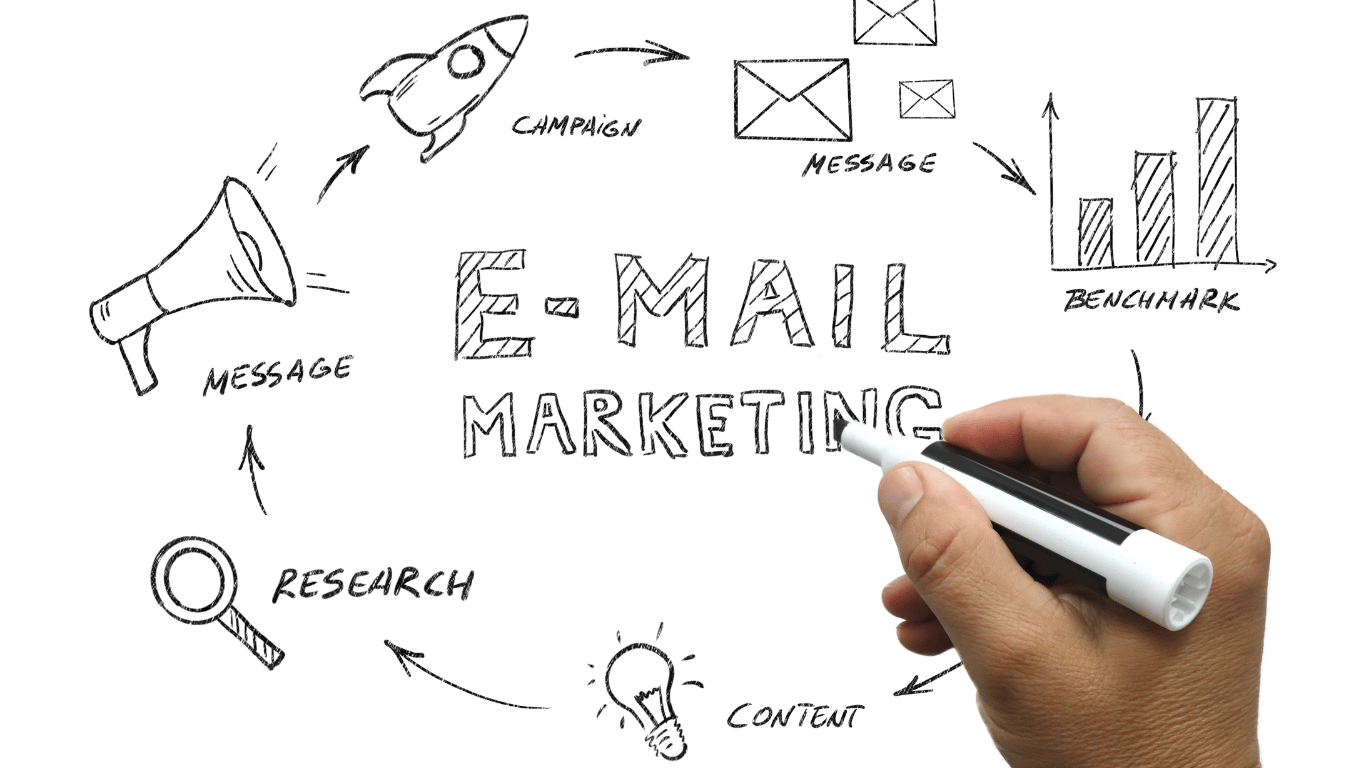
Revamp your strategy and boost those open rates. Embrace email marketing ideas for ecommerce that work—personalized subject lines, targeted content, and automation’s time-saving magic.
Lean into analytics; it’s all about timing and precision. Remember: mobile is king for reading emails.
Engage deeply; give readers value in every click. Calls-to-action? Make them clear and compelling for surefire conversions.
Cultivate loyalty like a pro gardener—nurture existing customers with updates they care about and offers just for them.
Ride the social wave; integrate platforms to multiply reach. Ultimately, your campaign isn’t just sent—it resonates, acts, and sells.
Frequently Asked Questions on Email Marketing Campaigns
Email marketing strategies are essential for e-commerce businesses as they help build and nurture relationships with customers, promote products, drive sales, and keep your brand on top of mind. It’s a cost-effective and direct way to engage with your audience.
- Segment your audience for targeted campaigns for customer engagement.
- Implement personalized product recommendations for loyal customers.
- Use compelling subject lines to increase open rates.
- Utilize automated email sequences for customer journeys.
- Incorporate visually appealing and mobile-responsive designs for email subscribers.
The frequency of emails depends on your business and audience. Test different schedules, but generally aim for a balance between staying on the top of the mind without overwhelming subscribers. Weekly or bi-weekly emails often work well to maintain customer engagement.
- Welcome emails for new subscribers.
- Abandoned cart emails to recover potential sales.
Product recommendations based on customer behavior. - Promotional emails for sales and special offers.
Post-purchase emails for feedback and additional offers.
Personalization is crucial for engaging customers. Use data to tailor emails based on customer preferences, purchase history, and behavior. Personalized content increases relevance and the likelihood of conversions.



